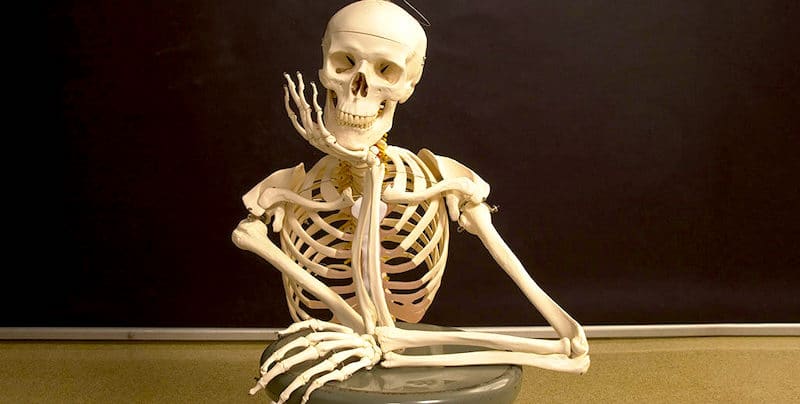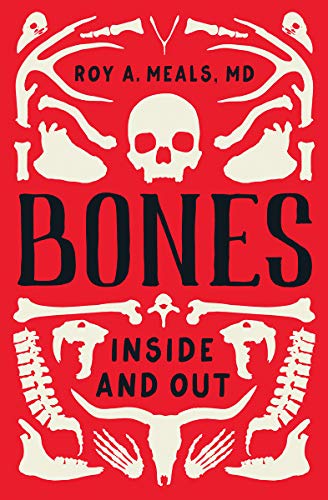By Paul Clement
Many studies have linked having hemophilia to a significantly increased risk of developing osteoporosis, or “holey bones” (osteo means “bone” and porosis means “porous”). Osteoporosis causes bones to become weak and brittle—so brittle that a fall or even mild stresses such as bending over or coughing can cause a fracture. But just because you have hemophilia does not mean you are destined to develop osteoporosis—you can do many things to lower the risk of developing osteoporosis or to lessen its severity.
Bones are living tissue and are constantly being “remodeled”—old bone is removed (resorption) and new bone is deposited (ossification). This remodeling process is relatively rapid when we are young: a baby’s entire skeleton may be replaced in a year. It slows as we age: about 10% of an adult’s skeleton is replaced in a year. Until age 25 to 30, more new bone is added than is removed and bones become more dense. From about age 30 to about age 50, the bone remodeling process is balanced, with new bone formation equaling the amount of bone removed. From about age 50 onwards, the remodeling process tilts towards resorption, and more bone is removed than new bone formed, causing your bones to become less dense and weaker as you age. (This is especially true when women enter menopause; the drop in the hormone estrogen—a key regulator of bone metabolism—significantly speeds bone loss, increasing the risk of osteoporosis.)

At a microscopic level, bones have an internal structure with many holes, similar to a honeycomb, which makes them rigid yet relatively light. In addition to allowing us to move by providing a rigid framework for the attachment of muscles, bones also protect our organs, make blood cells, and serve as a reservoir a number of minerals, especially calcium and potassium (bones contain 99% of the calcium in the human body). Calcium and potassium are critical for the functioning of your body and the concentration of these minerals in the blood must be tightly regulated: if your diet contains insufficient levels of these minerals, then your body pulls them from your bones, which is why a balanced diet is important. In osteoporosis, resorption pulls minerals from your bones faster than new bone is formed, leaving the holes in your bones larger (thus the name of the disease) and leaving a lower concentration of minerals, which causes our bones to become less dense: all of which weaken the bones, making them more prone to breaking.
What are risk factors for developing osteoporosis?
Many things—some we can control, others we cannot change—can tip the remodeling process towards bone removal/resorption, increasing the risk of developing osteoporosis. Some risk factors include family history of osteoporosis, older age, being female, being post-menopausal and not taking estrogen, being small/thin boned, and being of Caucasian or Asian ethnicity. Some diseases increase the risk of osteoporosis, including having type 1 diabetes, rheumatoid arthritis, chronic kidney or liver disease (such as HCV infection) and anorexia nervosa. And some medications are known to cause bone loss, including corticosteroids such as Prednisone, various anti-seizure medications such as Dilantin and certain barbiturates, and high-dose thyroid replacement drugs. And there are life-style choices that we can control that affect your risk of developing osteoporosis, including smoking, heavy alcohol consumption, being sedentary, and a diet low in calcium and vitamin D.
And having hemophilia—both hemophilia A and B of any severity—as well as being a carrier of the gene for hemophilia or having von Willebrand Disease, are all risk factors for developing osteoporosis, and for those with severe hemophilia A, developing it an early age. For many years it was believed that the increased risk of osteoporosis in people with hemophilia was primarily due a more sedentary lifestyle as a result of joint bleeds/joint pain and avoidance of exercise or sports that might cause a joint bleed. However, in recent years it has been found that factor VIII plays a role in bone health by binding to a protein that inhibits bone resorption, allowing resorption to proceed at a faster rate. And it is also speculated that thrombin, an enzyme created by the clotting process that helps form a fibrin clot, may also play a role in bone health. Bone metabolism is complex, and the many processes involved are not fully understood, but it is apparent that factor VIII, and perhaps other clotting factors, play a role in maintaining health bones. But having a bleeding disorder does not mean you are destined to develop osteoporosis.

Next week: Part 2! How to maintain healthy bones
PS Order this book for your kid with hemophilia, by Dr. Roy A. Meals!

